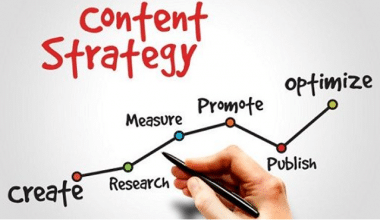Competitive intelligence is not only “good to have”; it is required. Leading companies cover their bases by staying up to date on industry and competitor news. This tactical intelligence informs strategic decision-making and assists businesses in rising to the top like cream. You can, too! We’ll find out what your competitors may already be aware of—and what you and your marketing team have been overlooking!
What is the Definition of Competitive Intelligence?
Competitive intelligence (CI) or competitor intelligence is defined as the process through which a firm obtains and analyzes information about its industry, business environment, competitors, and goods in order to determine its future strategy.
Competitive intelligence is often regarded as a vital component of developing a successful competitive strategy, which will ultimately result in the creation of a distinct competitive edge in business. In an increasingly competitive world, thorough research and market intelligence may often mean the difference between a thriving business and one that struggles to stay up with the competition.
Competitive intelligence systems are utilized by both large and small firms to assist them to gain an advantage. Organizations that have a thorough understanding of their industry’s competitive landscape have a considerable advantage over those that do not keep up with market intelligence.
The information-gathering and analysis process can assist a company in developing its strategy, identifying competitive gaps, and developing a comprehensive competitive analysis picture.
Competitive Intelligence Applications:
- Create corporate or business division strategies.
- Create anti-competitive techniques for one or more competitors.
- Prepare a new product launch, new market entry, or other market-related strategic action.
- Compare your organization to others.
- Prepare for future market opportunities and disruptions by anticipating and planning for them.
- Examine the efficacy of competitors’ market positioning and product message.
Competitive Intelligence Job Examples
Your staff will need to grow as your program becomes more advanced.
The rise of competitive intelligence as a discipline has resulted in an increase in the number of competitive intelligence employments.
Here are some popular competitive intelligence roles and what they entail.
#1. Competitive Intelligence Analyst
The original competitive roles. Competitive intelligence analysts help the competitive intelligence manager track and collect relevant data in order to extract competitive insights and advantages.
#2. Competitive Intelligence Manager
Competitive intelligence managers, a level above competitive intelligence analysts, are frequently responsible for developing and implementing broader strategic goals and initiatives. In addition to supervising the competitive intelligence analyst’s collection and curation of findings.
#2. Market Intelligence Manager/Analyst
Market intelligence and competitive intelligence have a lot of overlap. In fact, the two are more likely to be combined as a competitive & market intelligence manager. Market intelligence professionals, in general, concentrate on macro-market issues rather than specific competitors.
#3. Competitive Enablement Manager
Where competitive intelligence falls short, competitive enablement makes up the difference. Competitive enablement managers are in charge of not just monitoring data gathering and curation, but also of transforming that data into insights and providing their teams with the practical tools they need to capitalize on those insights.
#4. Product Marketing Manager
Traditionally, and in certain businesses still today, the product marketing manager is in charge of competitive intelligence, in addition to go-to-market strategy, sales collateral, messaging, positioning, and much, much more. Because of this large breadth of labor, many businesses are quickly considering of competing as its own independent activity.
Job description for competitive intelligence
Of course, hiring a competitive intelligence analyst or any other role is impossible without a competitive intelligence job description.
Their primary focus when hiring a competitive enablement manager is on Competitive
- Enablement
- Product Enabling
- Revenue Generation
- Strategy for Competitive Advantage
- Onboarding and transaction support
The breadth and depth of any complete function will differ depending on the organization, title, and size of the complete program.
These five pillars, however, serve as a foundation for any competitive enablement manager.
Sources of Competitive Intelligence: What External Data Should You Monitor About Your Competitors?
When a house is built on a solid foundation, it is built to last. Knowing the appropriate sources of competitive intelligence to monitor is the cornerstone for your program’s success.
Five External Competitive Intelligence Sources
#1. Press Releases and News
One of the most accessible sources of competitive intelligence is competitor news, events, and press releases.
These timestamped pieces of content might help tell the tale of where they’re going and what they value.
The press release page of a firm is a good sign of what they want present and potential customers to care about.
These announcements help competitors position themselves. Tools for introducing new funds and alliances, product developments, or indicating that a business is growing.
#2. Social media and web content
Competitor blog articles, social posts, podcasts, videos, e-books, case studies, and white papers are all sources of competitive intelligence that should be monitored by your organization.
Companies create content for branding and industry positioning more than ever before.
As a result, monitoring a competitor’s content production on a regular basis will assist you in developing your own strategy.
How frequently do they publish blogs? What are the primary themes they are attempting to ‘own’? What calls to action do they include in their content?
Finally, understanding how your rival wants to be perceived by the market allows you to position yourself more successfully against them.
#3. The product, its packaging and its pricing
The products and services of a rival are critical — if not obvious — sources of competitive intelligence.
At the end of the day, you need to know how you compare to others.
And knowing everything there is to know about your competition provides your sales personnel with the actionable information they need to close a competitive deal.
Finding a competitor’s most frequently asked questions and support threads provides insight into their customer experience (UX). Furthermore, they compile the most pressing concerns confronting those who use the product.
Aside from that, Forrester, Gartner, and IDC analyst studies can assist you to understand your competition in a variety of ways.
They examine strategy, market presence, and other factors for groups of products within a specific category.
Pro tip: Using Google’s advanced search can disclose information that a competitor does not clearly display on their website.
Product and user instructions for salespeople and customers can be found here. These are significantly more detailed than public feature lists and provide information about a product’s roadmap and positioning.
#4. Personnel and hiring methods
Understanding your competitor’s personnel strategy exposes their current needs as well as where they may be headed.
Looking at a competitor’s employment trends, for example, is a wonderful method to predict their next move.
These insights not only show a competitor’s progress but also a glance into their strategic plan.
Personnel changes at the C-suite level are also powerful signs of a strategic shift.
A new member of the executive team with a background that is not related to their primary business may signal a shift in strategy.
#5. Customer feedback
Every team in your business takes choices with the customer in mind. But who exactly is your consumer, and how do they differ from the target audience of your competitors?
Build buyer personas using competitive intelligence to help your sales and marketing teams better target their efforts.
It is essential to investigate who your competitors are bringing in, the size and industry type of these customers, why they opted to sign with your competition, and whether or not they are satisfied. Don’t forget to consider your own customer insights! Collect as much information as possible on prospective and current clients’ customer feedback.
The idea is to determine what your industry’s clients genuinely care about.
Simply said, client reviews reign supreme on the internet. Your company’s credibility is highly influenced by how your customers praise your product or service on numerous review websites. It’s also a wonderful place to acquire information on a rival.
It is also beneficial to observe how your competition schedules its content. Perhaps they publish weekly blogs but only hold webinars and longer content once a month. These insights will serve as benchmarks for evaluating your own content strategy. You may also be able to dominate a content area where your opponent falls short.
Five Internal Competitive Intelligence Sources
#1. Interviews with stakeholders
Interviewing internal partners will always be a primary source of competitive intelligence, regardless of the maturity of your program.
These stakeholder interviews are so vital that Tracy Berry, Freshworks’ Director of Competitive Intelligence and Communication, incorporates them into every competition program she creates.
“I utilize interviews to assist me to understand and to keep my finger on the pulse of competitiveness in the firm. And it allows me to set the priorities I need to.”
The most successful competition programs are those that collaborate closely with key stakeholders. The more connections you make with these stakeholders, the more successful you will be.
As a result, conducting stakeholder interviews and collecting insights from them is an important component of competitive intelligence.
#2. Internal communication platforms
If your organization does not have a dedicated competitive intelligence channel, you must halt all operations and establish one.
When it comes to sources of competitive intelligence, internal messaging is an incredible goldmine.
Companies with a competitive culture have an advantage over those that do not.
Start by creating a #competitiveintel channel on your internal messaging platform.
#3. Interviews with winners and losers
Despite our fondness for internal stakeholder interviews, this approach to acquiring competitive intelligence has drawbacks.
Because objective data from a third source trumps subjective hunches.
Win-loss interviews, whether conducted by an agency or in-house, can provide significant insights into why you’re winning or losing.
Jenn Roberts, a competitive intelligence professional at ServiceTitan, is an outspoken supporter of internal win-loss programs. She claims it’s a stepping stone to a strategic seat at the executive table.
Based on the voice of the customer, win-loss provides you with information to make informed decisions about your product, messaging, and positioning.
That, my friends, is a very useful source of competitive intelligence.
#4. CRM information
CRM data, at the absolute least, should help you direct and validate the priorities of your competitive campaign.
Your sales representatives have a decent idea of who their main rivals are. However, they may not always have the most up-to-date information on changes in the competitive landscape.
When CRM data reflects what salespeople are telling you, you can confidently pick which competitors to prioritize.
If it doesn’t, it could be a hint that you need to investigate this perception gap more.
Furthermore, keeping track of when competitors appear in transactions should help inform your strategic competitive intelligence plan.
This is the type of competitive intelligence that allows you to gain and maintain a strategic seat at the table.
#5. Recordings of phone calls
Call recordings are fantastic sources of competitive intelligence since they provide immediate insight into how your messaging is being received.
These insights will then enable you to move and change your messaging and positioning as needed.
And, as a competitor, examining call recordings allows you to hear what is and isn’t resonating. You can then edit, remove, or add discussion tracks based on their success in the field.
Read also: TOP 10 COMPETITIVE INTELLIGENCE TOOLS TO USE IN 2023
What is Competitive Intelligence Research?
#1. Determine who your competitors are.
You treat your industry as a game, and your competitors as players when you use CI. The ultimate goal is to use key insights from their plays to guide your next move.
It will be much more difficult to gather valuable information if you do not know who your competitors are.
Begin by identifying your top direct competitors. These are brands that provide a comparable product or service to the same user persona.
Then, create a supplementary list of potential competitors. They will offer a different product or service, but they may still appeal to your target demographic. It is preferable to track for inspiration rather than a competitive advantage.
Once you’ve compiled your list, sort it by threat level.
#2. Establish goals.
Set your objectives before you begin undertaking CI research. “What do we want to learn?” ask yourself and your team. This will assist you in determining which pathways to explore and which data sources to concentrate on.
Assume Amore, a high-end handbag manufacturer, wants to learn more about its competitors’ marketing strategies, specifically their language, campaigns, and content marketing. This is a highly defined aim that gives your CI team a clear direction. The team can then create a strategy to locate the data.
#3. Plan your data collection strategies.
Now that your CI team understands the final goal, they can begin to build up data collection tools.
In order to comprehend Amore’s competitors’ marketing strategies, the intel team would most likely examine their websites, landing pages, blog posts, and downloadable offers, to mention a few.
Social monitoring and listening will also be useful in determining what information Amore’s competitors are putting out there and how consumers are reacting to it.
Having a plan of action for data collecting assists CI teams in staying within the project’s scope. It can be tough to know where to begin when you cast a net that is too large.
#4. Compile and analyze your data.
Now that you’ve identified your rivals, goals, and research strategies, you can get to work.
Depending on your objectives, data collection can take weeks or months. Using a CI tool while you compile your data will help you categorize it for later analysis. Go to that section now.
Things start to get interesting if you have enough knowledge. You might start looking for patterns and discovering your competitors’ strengths and shortcomings.
#5. Share information with key stakeholders.
The first step is to identify themes in your research; the second is to deliver your findings to important stakeholders.
They can then use this knowledge to help the business develop and create more income.
One thing to remember is that, as with any data analysis, you are the storyteller. You must not only analyze it but also frame it in order to show why it is important. It can be difficult to know where to go next without that key component.
You should also create team-specific reports. For example, your sales team may prefer battle cards, whilst your marketing team may prefer a visual reporting breakdown. If you’re unsure what will work best for you, go straight to the source. Work with your teams to figure out the best approach to communicate your findings.
Examples of Competitive Intelligence
CI activities might range from researching your competitors’ pricing models to tracking their social media activity. It all comes down to how much time and resources your team is willing to devote. Here are the most popular CI sources and intelligence:
- Publications in the press
- Job openings
- Public relations campaigns
- Ebooks, white papers, and templates are examples of lead magnets.
- Product and service enhancements (rollouts, updates to features, packages, etc …)
- Price adjustments
- Sites for customer feedback
- Announcements about rebranding
- Website alterations or redesigns
- Client communications and sales calls
- Earnings statements (for publicly traded companies)
While the CI team will gather some of this information, other departments are welcome to submit their own. Salespeople, for example, might be extremely beneficial for gathering intelligence because they have direct interaction with leads and consumers.
Best Practices in Competitive Intelligence
#1. Maintain legal boundaries.
Although this may appear simple, a word like competitive intelligence can convey the wrong impression.
When performing any type of CI work, you must adhere to all legal requirements. Accessing information using illicit means, such as hacking or phone tapping, enters “espionage” territory.
If you have any doubts about using CI, err on the side of caution and check with your legal team. If you don’t have internal staff, contact a corporation lawyer for advice on the best course of action.
#2. Be moral.
Just because something is legal does not mean it should be done.
Assume your team discovers a disgruntled employee from a competitor who has recently departed and possesses vital knowledge about the company’s five-year strategy.
While contacting the employee is not illegal, it may be unethical because the person may be enticed to give critical information.
Use your best judgment. If something doesn’t feel right, it most likely isn’t.
#3. Share your insights frequently.
According to one Crayon study, organizations that communicated with CI at least once a week were twice as likely to see revenue increases as those that shared it less frequently.
With this in mind, sharing insights should be done frequently and on a regular basis. CI is a continuous process, not a one-time event.
As long as your business is expanding, you must keep an eye on the competitors.
#4. Put reports into context.
Sharing findings on a regular basis is a crucial aspect of CI.
Context is key, whether it’s through a newsletter, a monthly email report, or a meeting.
Assume the CI team at Amore receives word that their direct competition Abella has announced a collaboration with a luxury clothing company. That report should also include information about how it affects Amore’s positioning.
After all, the goal of tracking competitors is to use that information to improve your own positioning.
In this case, the relationship with the clothing brand could help Abella establish itself as a luxury brand and help it grow upscale. This could erode Amore’s standing and necessitate more emphasis on the product’s rarity and quality.
In addition, insights do not occur in a vacuum. They are constructed over months or years of trends. As a result, including historical data can help define these findings and enable strategic decisions.
Conclusion
Competitive intelligence programs must develop a procedure that allows all teams to mobilize swiftly in order to outmaneuver their competition.
By storing competitive intelligence in a central, easily accessible repository, insights will be used more frequently, and teams will become more comfortable sharing intel gathered in the field with the entire business.
The best competitive programs, on the other hand, go beyond simply storing delicious intel. It empowers employees by disseminating information that is both relevant to their role and simple to utilize.
This guide provides the foundation for establishing a strong competitive intelligence program, but it is a continuous process to ensure that employees incorporate competitive intelligence into their employment on a regular basis.
Related Articles
- MARKETING INTELLIGENCE: Definition, Types, Tools, Strategies & Examples
- Financial Intelligence: Babysteps to Proper Mastery (+ How to guide & Detailed courses)
- BUSINESS INTELLIGENCE TOOLS: Meaning, Best Tools, And Guide
- Business Intelligence Analyst: Job Description, Certifications & Salary In the US
- Top 11 Business Intelligence Software and Tools In 2023






